The Ultimate Guide to Google Ads
Originally published: September 26, 2021 04:05:22 PM, updated: June 14, 2023 07:12:10 AM

Suppose you're an advertiser looking to get the benefit of the extensive amount of searches conducted on Google every single day and quickly get the attention you need to grow your business. In that case, there's no better place to start than by signing up for Google Ads.
In this guide, you’ll learn:
- What is Google Ads?
- How many campaign types of Google Ads are there?
- Top reasons to advertise on Google Ads
- How does Google Ads work?
- How to build a Google Ads account that’s highly relevant to your potential customer’s searches?
- How to do keyword research on Google Ads?
- How to optimize the landing page for Google Ads?
- What are Google Ads bidding strategies?
- What are the types of ad targeting in Google Ads?
- What are Google Ads extensions?
- Google Ads best practices to increase sales
- About the Google Ads reports
What is Google Ads?
Google Ads is a paid ad platform that falls within the pay-per-click (PPC) marketing channel, in which you (the advertiser) pay per click or per impression (CPM) on an ad.
Google Ads is a powerful platform for earning qualified traffic to your business. With Google Ads, you can improve the number of visitors to your website, phone calls, and in-store visits.
Google Ads allows you to generate and share well-timed ads with your target audience (on both mobile and desktop). This means your company will appear on the search engine results page (SERP) when your ideal customers use Google Search or Google Maps to browse for items and services similar to yours. In this manner, your target audience sees your ad when it makes sense for them to see it.
Over time, Google Ads will assist you in analyzing and improving your ads to reach more people and achieve all of your sponsored campaign objectives.
You can also customize your adverts to fit your budget, regardless of the size of your company or your available resources. You may utilize the Google Ads tool to stay under your monthly budget and even halt or terminate your ad expenditure at any moment.
How many campaign types of Google Ads are there?
An objective and a campaign are the first steps in Google Ads. You'll select a campaign type depending on your marketing objectives, brand strategy, and time constraints.
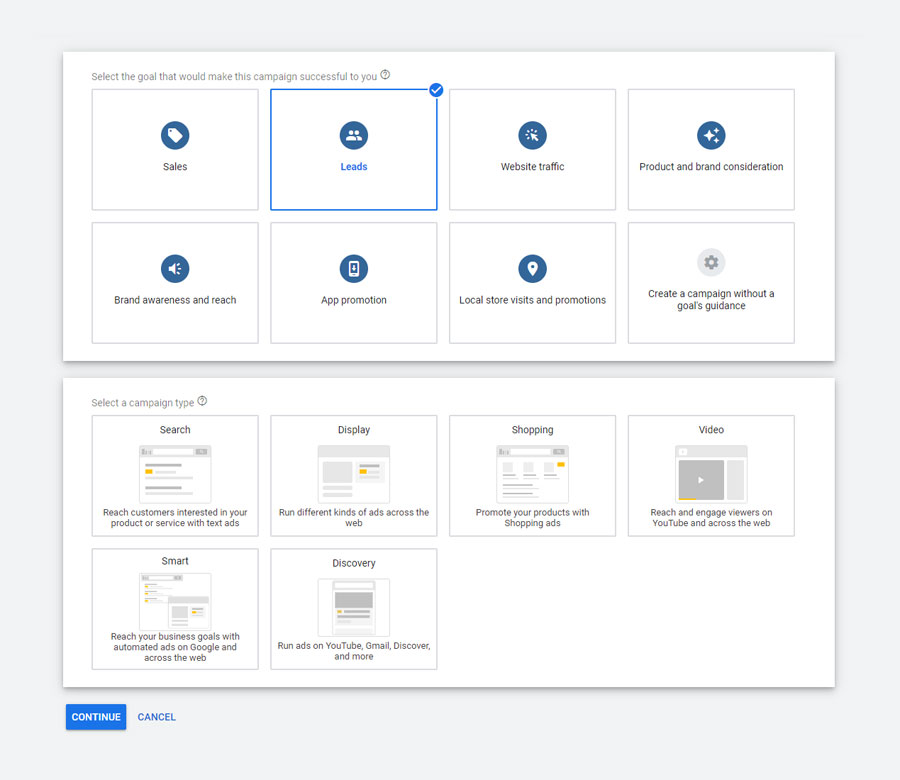
Search campaigns: Text ads on search results
Search campaigns are text advertisements that appear in search results and target people looking for the products and services you offer on Google.
You can show your advertising to people who are actively searching for your products and services, which is perfect for boosting sales, leads, or traffic to your website.
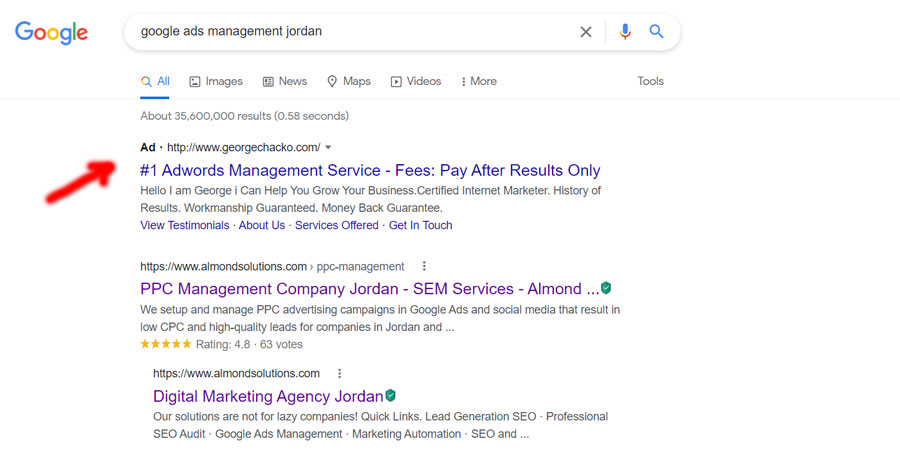
Display campaigns: Image ads on websites
Display campaigns are image advertisements on websites that allow you to reach people who are browsing millions of websites and apps with visually engaging adverts. A display campaign is an excellent way to extend the reach of your Search campaigns to other places on the internet.
You can also use the display campaign to target new and existing customers with retargeting advertising.
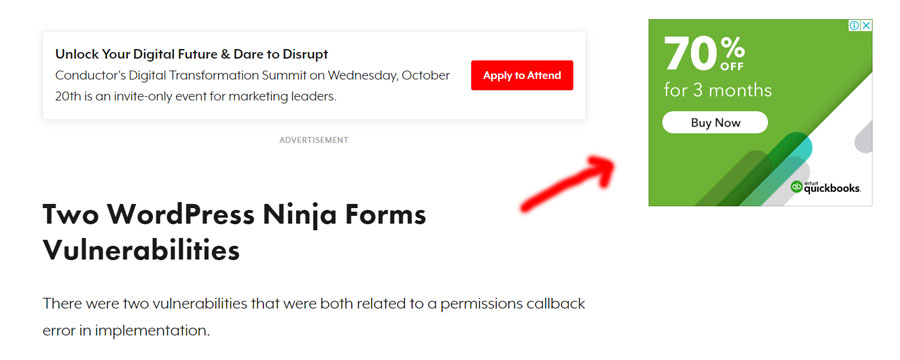
Video campaigns: Video ads on YouTube
You can use video campaigns to show video advertisements on YouTube and other websites.
Some sorts of video campaigns might help you increase brand recognition. Others are intended to increase conversions or encourage visitors to shop on your website.
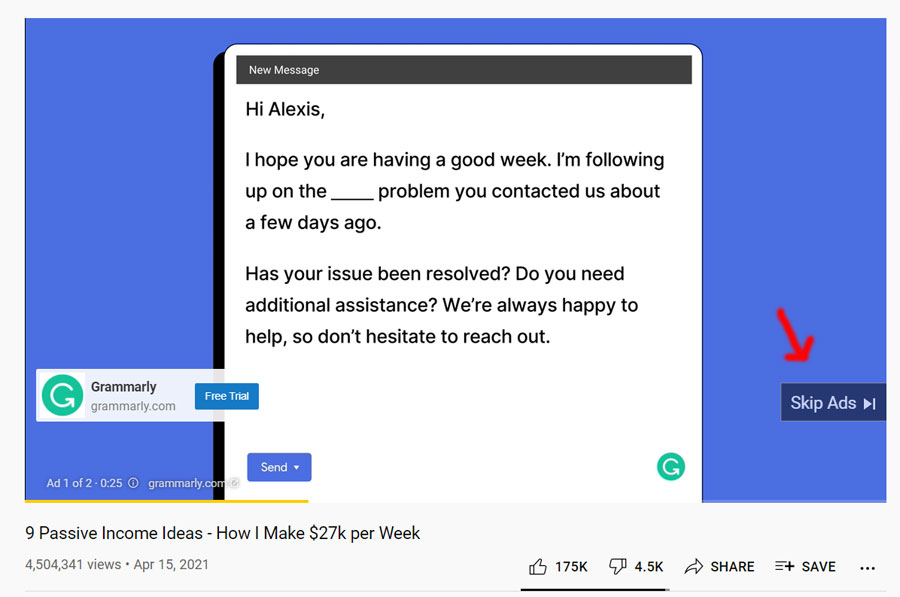
Shopping campaigns: Product listings on Google
Shopping campaigns are product listings that are perfect for selling your product inventory if you're a retailer. Advertisements for shopping appear in search results and in the Google Shopping tab.
Store owners can also use local inventory advertisements to promote products that are available at their physical locations.
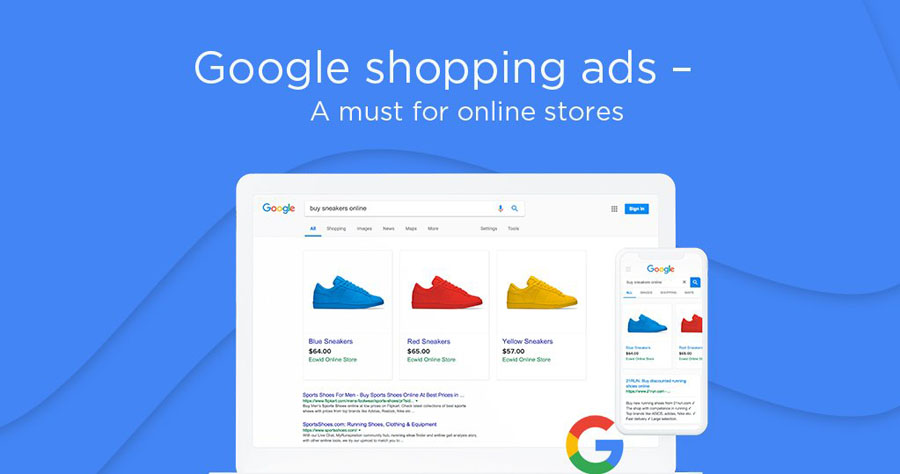
App campaigns: Promote your app on many channels
App promotions assist you in attracting new app users and increasing app sales. This campaign type automatically optimizes advertisements across Search, Play, YouTube, Discover, and over 3 million other sites and apps based on data from your app.
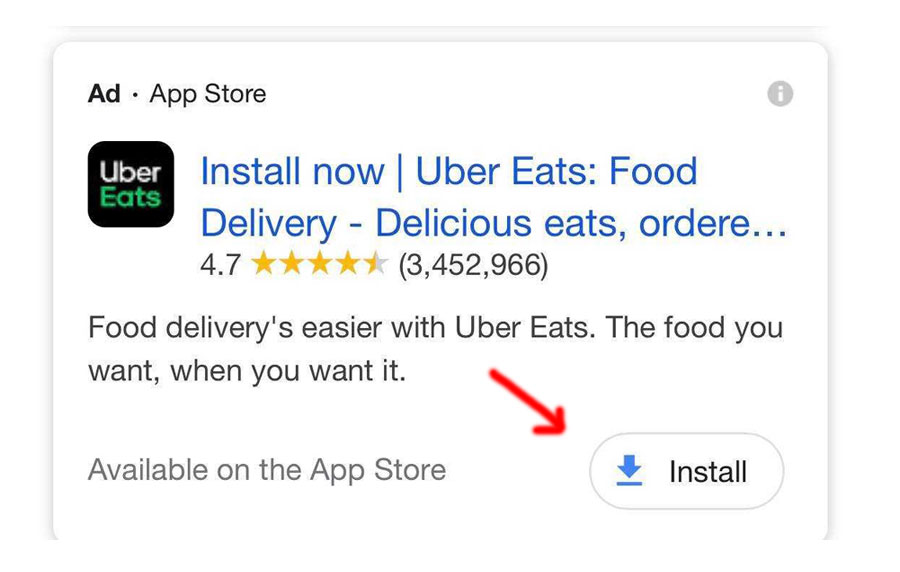
Local campaigns: Promote locations on many channels
Local campaigns assist you in attracting customers to your actual locations. Your advertising will be optimized for search, display, Google Maps, and YouTube automatically.
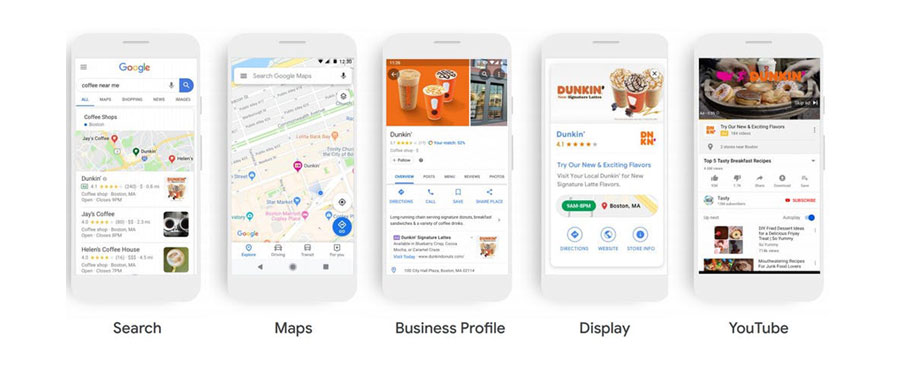
Smart campaigns: Automate your campaigns
The simplest approach to automate your campaigns and get your advertising up and running is to use smart campaigns.
Enter your business details and a few ads, and Google will determine the optimal targeting for you to get the most bang for your buck.

Top reasons to advertise on Google Ads
1. Google Ads is scalable
Finding lead sources that scale – that is, don't require five times the effort to generate five times the leads – is one of the most challenging tasks for any marketer. Because Google Ads is very scalable, several businesses spend millions of dollars on Google Ads advertising each year.
2. Google Ads is measurable
Online marketing is more measurable when compared to traditional marketing channels like television and magazine advertising, and Google Ads PPC is one of the most measurable online channels.
3. Google Ads is flexible
Google Ads provides you a lot of flexibility in terms of customizing your campaigns and ads to meet your specific objectives, such as hyper-targeting the audiences you want to reach.
4. Google Ads is easier and faster compared to SEO
SEO results can take months to appear for new businesses and websites. People used to call this supposed "penalty" the Google sandbox effect because they thought Google was purposefully filtering new websites out of the results. The issue is more than likely severe competition, and it takes time for a website to "establish" itself and earn authority and links.
Because you don't have to wait as long for results with Google Ads, it's a perfect solution for new firms. You can invest resources in a Google Ads campaign while working on your site's SEO and begin receiving impressions and clicks right now.
5. Traffic from Google Ads may convert better than organic traffic
We don't knock organic traffic since it's impressive! On the other hand, Paid search traffic appears to convert better than organic traffic, with conversion rates up to two times greater. (Conversion rates vary by industry, and this may or may not apply to your specific firm; but, you won't know until you try.) This is most likely because paid search traffic is more targeted and qualified. Inquiries that result in ad clicks are far more likely to be commercial than informational.
 Do you have active campaigns on Google Ads and want us to audit them for evaluating their performance? If so, a well-executed audit will be handled to help you spot issues to fix, identify areas for improvement, and give you a clear overall picture of how well your Google Ads are performing. Contact us
Do you have active campaigns on Google Ads and want us to audit them for evaluating their performance? If so, a well-executed audit will be handled to help you spot issues to fix, identify areas for improvement, and give you a clear overall picture of how well your Google Ads are performing. Contact us
How does Google Ads work?
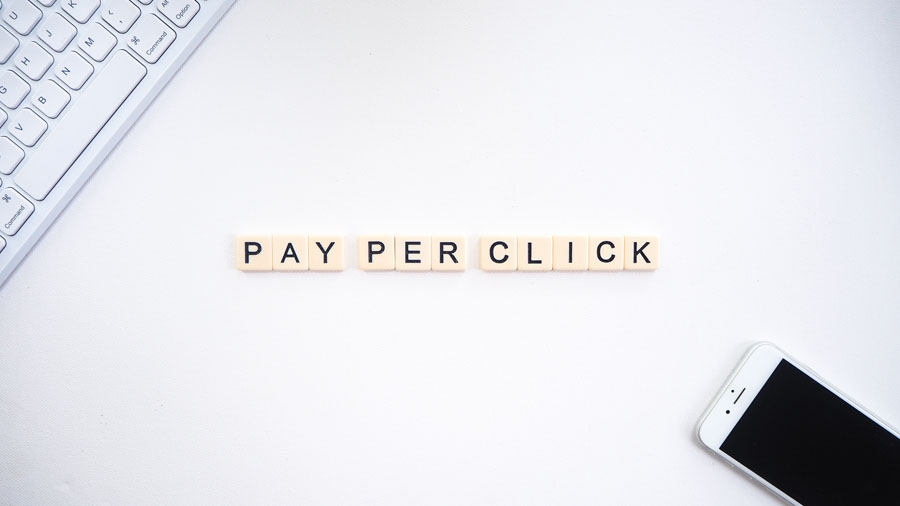
Google Ads uses the pay-per-click (PPC) model. Advertisers target a specific keyword on Google and place bids on it, competing with other marketers targeting the keyword.
Your bids are "maximum bids," or the most amount you're willing to pay for an ad.
If your maximum bid is $5 and Google finds that your cost per click is $3, you will be given that ad placement! You won't obtain the ad placement if it's determined to be more than $5.
Alternatively, you can choose your ad's maximum daily budget. You'll never spend more than a certain amount per day on that ad, which can help you figure out how much to invest in your digital ad campaign.
For their bids, advertisers have three options:
- CPC (Cost Per Click) (CPC). When a user clicks on your ad, you pay a certain amount.
- Cost-per-mille (CPM). How much per 1000 ad impressions do you pay?
- Per-engagement cost (CPE). How much do you spend when a person clicks on your ad and takes a specified action (signs up for a list, watches a video, etc.).
The bid price is then combined with a Quality Score, which is an evaluation of your ad. Google claims that:
"A Quality Score is a measurement of how well your adverts, keywords, and landing pages are. Ads of higher quality can result in lower rates and better ad placement."
The score ranges from one to ten, with ten being the best. The greater your score, the higher you'll rank, and the less time you'll need to convert.
Your Ad Rank is determined by the combination of your Quality Score and your bid amount, and it is the position in which your ad will show on the search results page.
When a person sees the ad and clicks on it, the advertiser is charged a tiny fee (thus pay-per-click).
The premise is that the more people who click on an advertiser's ad, the more likely they will achieve the campaign's goals (e.g., become a lead, make a purchase).
How to build a Google Ads account that’s highly relevant to your potential customer’s searches?
You now have a better understanding of how Google Ads functions. And you've learned the top reasons why Google Ads is worth your time, money, and effort.
Now is the time to seize the opportunity and create a Google Ads account that is both highly relevant to your potential customers' queries and simple to manage. To get started, simply watch the video below.
How to do keyword research on Google Ads?
Keyword Planner is a tool that can help you find keywords for your search marketing. You may use this free tool to find new keywords relevant to your business and view estimates of the number of searches they receive and the cost of targeting them.
Another option to develop Search campaigns focusing on in-depth keyword research is to use Keyword Planner.
Benefits
- Discover new keywords: Get keyword suggestions for your products, services, and website.
- See monthly searches: Estimates of the number of monthly searches for a keyword are available.
- Determine cost: Calculate the cost of having your ad appear in searches for a specific keyword.
- Organize keywords: Examine how your keywords fit into various brand-related categories.
- Generate new campaigns based on keyword research: Use your keyword plan to create new ones.
It's crucial to remember that, while Keyword Planner can help you pick keywords, the success of your campaign is determined by a multitude of factors. For example, the effectiveness of your campaigns can be influenced by your bid, budget, product, and customer behavior in your industry.
How to optimize the landing page for Google Ads?
When it comes to converting clicks into buyers, your landing pages are crucial. When someone clicks on your ad, they expect to be taken to a page related to your ad's content. They're more inclined to depart if they don't find what they're looking for right away.
Check that your landing page is relevant to your ad and keywords
Select a landing page that roughly resembles your advertisement and keywords. The call-to-action in your ad copy should also be mirrored on your landing page. If your ad invites customers to sign up for a free tour, for example, you may include a sign-up form prominently on your landing page. Consider the following scenario: The link between your advertisement and landing page is the link that connects a potential customer to a transaction. The stronger their link (and the more immediately relevant they are), the more likely you are to convert.
Check to see if your site is mobile-friendly
Many of your consumers will be using a mobile device to access your website, and it can be difficult for folks to find what they want on a smaller screen.
Make sure that your landing page is simple to use
Make it simple for customers to do the action you want them to take—ordering your product, calling your phone number, or submitting an inquiry—by making it quick and easy for them to do so. Don't make folks look for information they may require. Avoid overcrowding your site with advertisements or pop-ups.
Important information should be placed near the top of the page. Customers will notice it right away when they arrive on the page, and they won't have to scroll down to see it.
Provide unique and relevant stuff
On your landing page, try to provide helpful, original information regarding anything you're advertising. Make it obvious what your product or service performs. You might, for example, consider including customer reviews that demonstrate real-world feedback.
You can read more about this part here: Which is a Best Practice for Optimizing a Landing Page for Google Ads.
What are Google Ads bidding strategies?
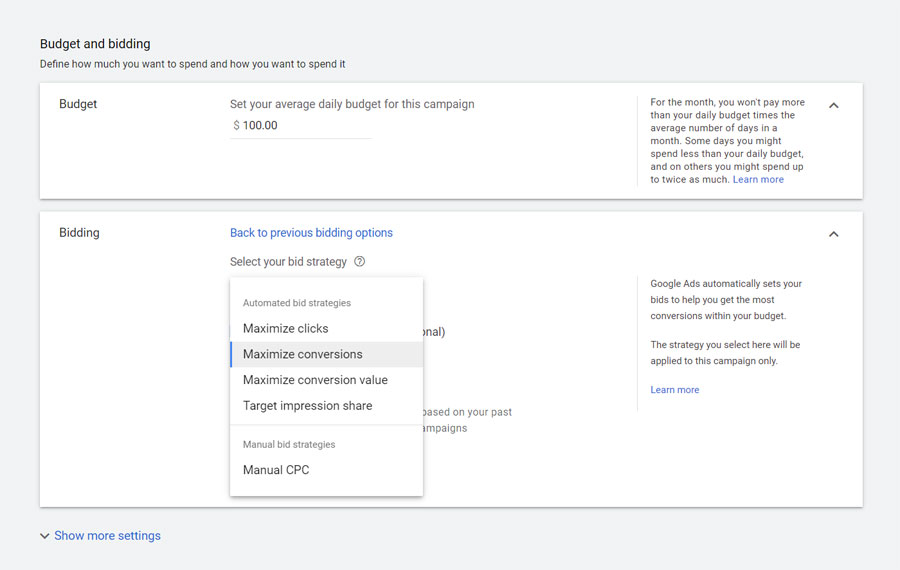
Target CPA (Cost Per Acquisition)
If you want to optimize conversions, target CPA bidding is a bidding approach you can apply. Selecting Target CPA bidding will focus on converting users at a specified acquisition cost if generating conversions is your key goal for the campaign.
Google Ads will automatically set your bids on each campaign depending on your CPA if you choose this strategy. While specific conversions may be more expensive, others may be less such that your acquisition expenses are balanced.
If you don't know what your acquisition expenses are, target CPA bidding can be difficult.
Simply said, your cost per acquisition is the maximum amount of money you can spend on obtaining a single customer.
Target ROAS (Return On Ad Spend)
The average conversion value (for example, revenue) you'd like to obtain for each dollar you spend on ads is your target ROAS. Keep in mind that the conversion volume you receive may be influenced by the target ROAS you specify. Setting a target that is too high, for example, may reduce the number of visitors your advertising receive.
Maximize Clicks
An automated bid strategy that helps you acquire as many clicks as possible while staying within your budget. The most straightforward approach to bid for clicks is with Maximize Clicks—you specify a budget, and Google Ads does the rest. You don't have to set particular bid amounts for your ad groups, keywords, and placements.
Maximize Conversions
Google Ads' Maximize Conversions feature automatically sets bids to acquire the greatest conversions for your daily budget. One of the various automated bidding tactics available in Google Ads nowadays is the max conversions strategy.
Depending on your goals for return on ad spend (ROAS) or cost per acquisition (CPA), Maximize Conversions can be an excellent way to acquire the most conversions while spending your daily budget efficiently.
Maximize Conversion Value
The Maximize Conversion Value bidding strategy aims to obtain the most feasible conversion value for a given budget. To determine the best CPC bid for each auction, the system considers historical campaign data and contextual signals such as device, location, time of day, demographics, query, and more.
Target Impression Share
Target impression share is an automatic bidding approach that sets bids with the goal of displaying your ad at the very top of the page or anyplace on the Google search results page. Target impression share can be used as a single-campaign standard plan or portfolio strategy across numerous campaigns.
Manual CPC
You can define your own maximum cost-per-click (CPC) for your advertising using this bidding strategy. This is in contrast to automated bid techniques, which automatically determine bid amounts for you. Manual CPC bidding allows you to select the maximum amount you're willing to spend for each ad click.
What are the types of ad targeting in Google Ads?
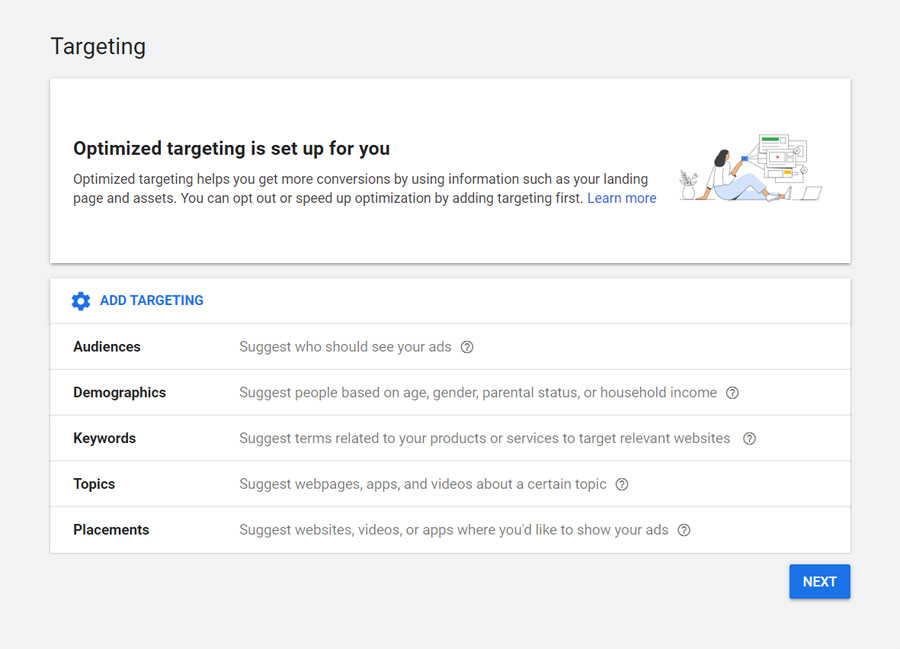
Keywords Targeting
Advertisers utilize keywords to notify platforms like Google which searches we want to appear for.
When someone puts in "website design" into Google, the search engine scans your account to determine if you have the keyword "website design" in your account. If you do, you are eligible to participate in the inquiry, and if you don't, your ad will be hidden.
Many additional characteristics, such as keyword match types, negative keywords, and keyword bids, determine whether your ads appear for a given query, but that's a topic for another chapter.
Placement Targeting
On the Google Display Network, placement targeting is the most specific. Advertisers who use placement targeting provide Google with a list of specific websites, apps, videos where they want their ads to appear. The website must be a member of Google's AdSense ad network for your ad to appear.
Topics Targeting
Advertisers can choose subjects from a list provided by Google, which groups websites and placements that meet the theme together. Gardening, industrial software, extreme sports, and medical research are just a few covered topics.
There are many high-level categories, and most of them have several subcategories to assist you in identifying the exact type of material you want to appear next to.
Demographics Targeting
Demographic targeting is an excellent approach to improving performance over time or ensuring you're reaching the right people.
These targeting layers are defined by the information provided to the channels during the creation of a profile and the user's actions.
Overall, these targeting settings are best used as incremental layers to adjust the other targeting variables stated above rather than being utilized alone.
Audience Targeting
In-Market:
In-Market audiences are similar to Topics audiences, except they are predefined audiences rather than Google's contextual targeting groups. Google believes these are user groups actively researching or "in the market" for a particular product or service.
You can browse the lists of In-Market Audiences in the same way that you can browse the list of topics, and many of the audiences have comparable topics to the list of Topics.
In-Market audiences were previously only available on the Display Network, but Google and Microsoft Ads are now allowing advertisers to layer these lists into Search campaigns.
Adding this layer can assist in focusing the search on users who have done some research in addition to searching.
Life Events:
You can use Life Events to target people who are exhibiting signs of big life events. These have been around for a while, and the list has grown since it was first released a few years ago.
Detailed Demographics:
Detailed Demographics, like Life Events, allow you to target people based on data Google assumes or infers about them, such as Parental Status, Marital Status, Education Level, and Homeownership Status.
Custom Intent Audiences:
One of the newest sorts of audiences on the Google Display Network is Custom Intent Audiences. These lists allow advertisers to construct audiences based on products and services that your desired audience is actively investigating using keywords and URLs.
Despite the fact that you're adding keywords like contextual targeting, Google Ads is using them to discover users who are likely to be interested in them. Google will frequently supply its own list of automatically generated Custom Intent audiences based on other features of your account.
These can be found in the UI immediately above the Custom Intent section. If you're having trouble coming up with your own, try one of the ideas on this list.
This targeting type helps reach users who aren't represented in In-Market lists or for narrowing the focus beyond what In-Market audiences can supply.
Affinity Audiences:
Affinity audiences have the broadest reach of all the targeting options in the Display Network. They were created to simulate television audiences.
These are groups of people interested in a particular sector or thing, such as "Beauty Mavens" or "Social Media Enthusiasts."
When you're looking to reach a large number of individuals for things like branding or high-level calls to action, these audiences are ideal.
You can create your own Custom Affinity Lists, similar to Custom Intent Audiences, by adding keywords and URLs to create custom themes.
Similar Audiences:
The final type of audience to target is similar audiences, which is a unique option. Your Remarketing audiences are a function of similar audiences. It's critical to develop Remarketing lists with relevant segmentation to boost your chances of creating Similar Audiences on your account.
Remarketing:
Remarketing with Google Ads is a type of advertising that allows advertisers to offer tailored ads to users who have previously visited their websites. Remarketing, also known as retargeting, can help you boost your conversion rates and return on investment.
What are Google Ads extensions?
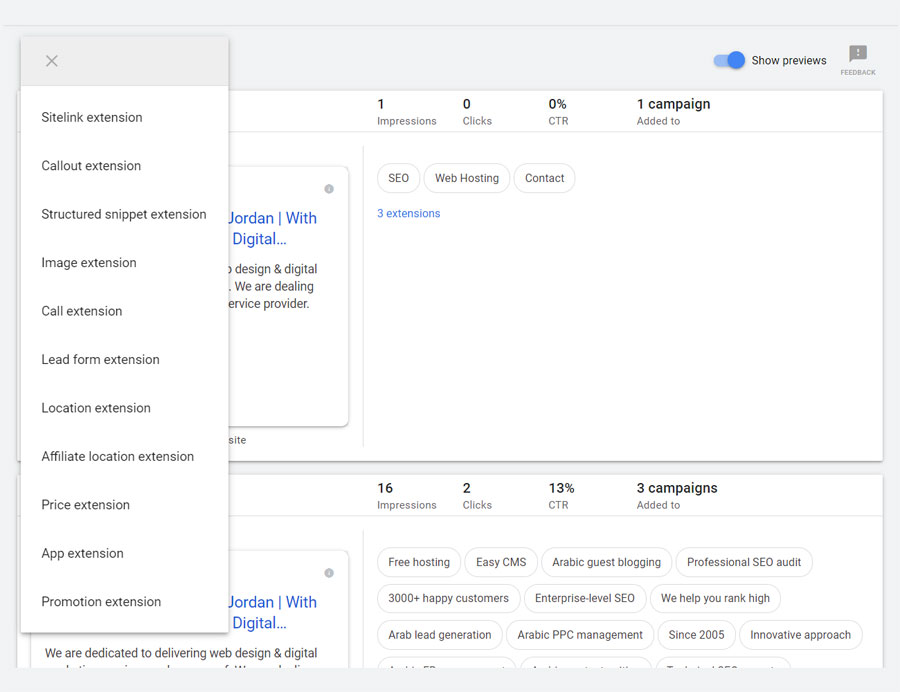
Extensions provide more information to your ad, giving customers more reasons to choose your company. These can boost the clickthrough rate of an advertisement by several percentage points. Call buttons, location information, links to specific portions of your website, additional content, and more forms are available in extension formats.
1. Sitelink extensions
In search, sitelink extensions provide additional links beneath the main text ad. These links take visitors to other pages on your website that you want them to visit.
2. Callout extension
Callout extensions, in other words, are 25-character text snippets that describe the most exciting and valuable aspects of your company, products, or services.
Callout extensions are for you if you offer free in-store pickup, free delivery, or pride yourself on using ethically sourced goods.
3. Structured snippet extension
The key advantage of structured snippets is that they generate more quality leads. Why? Because when individuals are aware of precise information about what you want to give them before they click and land on your site, they are more likely to convert.
To transmit certain facilities, types or categories, and destinations or locations, use structured snippets.
4. Call extension
For businesses that want to receive calls from clients, the call extension is a lifeline. Because you can include your phone number right in the ad, there is virtually no friction between a lead and your company.
5. Lead form extension
You don't have to direct a potential buyer to your website. They can enter information right on your ad via a customized lead form, and you can contact that lead as quickly as feasible.
6. Location extension
For any brick-and-mortar that requires customers to come to you, a location extension is a must-have. Location expansions are obviously not for online-only businesses. If you do have a physical location, though, this extension type can help users find you, visit you, and make in-person sales.
7. Affiliate location extension
An affiliate is an individual or organization that is officially linked to another. In this situation, affiliate location extensions are used to connect consumers to other areas where your product is authorized to be sold.
8. Image extension
Advertisers can use image extensions to add rich, relevant graphics to their existing text advertising. With attractive graphics of products or services that enhance the content of their text advertising, image extensions can help advertisers drive performance.
9. Price extension
The key benefit of price extensions is to create clear expectations rather than to prevent your personnel from fooling clients. They inform consumers about pricing up front, and an informed user is more likely to book an appointment or purchase from you when he contacts or visits your store or website.
10. App extension
App extensions increase the visibility of your app and allow interested people to download it right from the text ad. Another advantage of app extensions is that they are the only option to track app downloads based on keywords.
11. Promotion extension
Promotion extensions can enhance your Search Network text advertising value by emphasizing your specials and promotions for those looking for the greatest deals your company has to offer.
Google Ads best practices to increase your sales
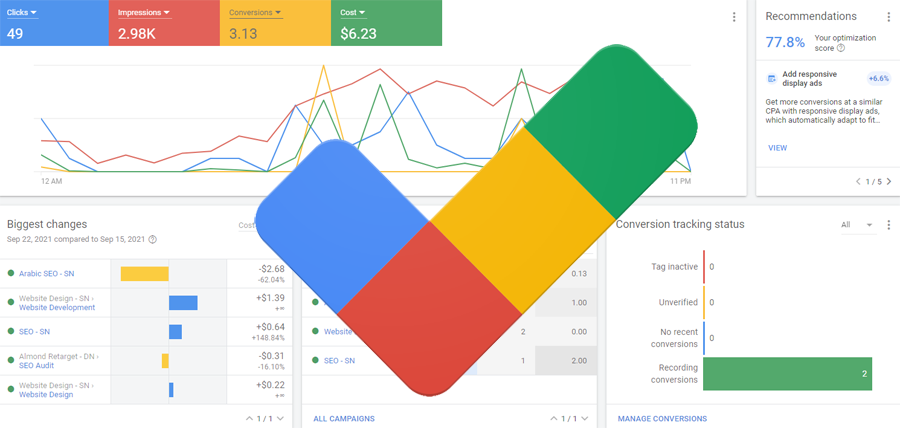
1. Start with defining your goals
Select the product categories and offers that you wish to highlight: these are the ones in which you should put your money. The key is to think carefully and choose the most likely areas to produce a high return on investment.
2. Choose the most effective keywords for your advertising
Even though you are paying for higher rankings, you must nevertheless describe your business offer in such a way that it is noticed. This necessitates judicious keyword selection as well as relevant page content. You must learn a crucial skill: the strategic choice of killer keywords for the purposes of positioning.
3. Align your account's structure with that of your website
If you don't want to lose prospects to the competition, you need to make it easy for them to obtain your items. Make sure your destination sites match the content and keywords in your ads.
4. Create excellent advertisements
The advertisement is the initial point of contact between you and potential customers, and it needs to be specific, relevant, and appealing (new product, exclusive offer, unbeatable price, etc.).
5. Determine your return on investment (ROI)
You can calculate the return on each dollar spent on a campaign using Google Ads. A positive return on investment allows you to manage your budget in unique ways. The question isn't how much money you have, but how much money you want to spend! By analyzing the results of your campaigns, you'll be able to determine where your margins are highest and which optimizations to make for better results. Your ROI is affected by click rate, conversion rate, average basket, cost per click, and quality score.
6. Make your website more user-friendly
Google Ads campaigns assist you in fine-tuning your website for best results.
Observing consumer behavior is crucial to success. You'll know what customers want if you know how to read Google Ads and Google Analytics data, and you'll be able to offer it. The data is available to assist you in making quick decisions: modify your photos, test a new product page hook line, and emphasize reassuring features. Everything should be put to the test, and only what works should be kept.
Customers engage with websites on various devices; if you don't have a mobile version of your site, you'll be left behind.
7. Use remarketing to strengthen your brand's presence and build client loyalty
You've probably observed that while online, you come across advertising banners detailing offers you've seen on other sites. This is referred to as remarketing, and it is a method that Google has been perfecting for some years.
About the Google Ads reports
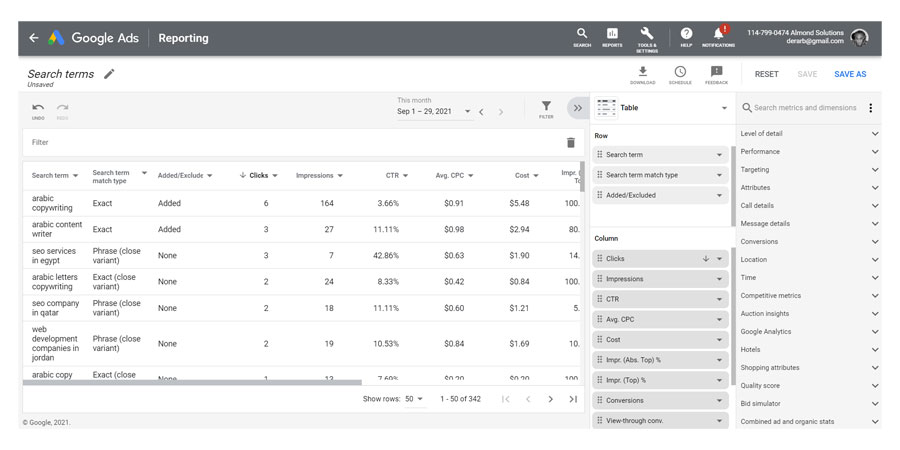
The Google Ads reports include post-click performance indicators for users who clicked on your Google Ads campaigns and then visited your website or downloaded and used your mobile app. These statistics give you a glimpse into your users' Acquisition-Behavior-Conversion (ABC) cycle, including how you recruit users, how they behave on your app or site once they've been acquired, and how they convert. By default, Google Ads reports display useful ABC data from both Google Ads (e.g., Clicks) and Analytics (e.g., Bounce Rate), giving you more insight into which advertising strategies are working well for you and which may be improved.
To discover what happened as a result of users clicking on your advertising, look at the Google Ads reports. Which campaigns, for example, are most effective at driving conversions (as measured by the Goals you've set up in Analytics) and revenue? In the Google Ads Campaigns report, look at conversion rates and income.
FAQs
Can I use Google Ads for affiliate marketing?
It's debatable whether or not to use Google Ads for affiliate marketing. Using affiliate URLs directly as a landing page in your ad copy is not advised, even if you can use Google Ads to drive people to your website. There you can use affiliate links with a suitable context in your content.
You need to bring a ton of high-quality traffic to your website to make a sizable amount of money with affiliate marketing. To pull off such a feat, you must choose a trustworthy online marketing strategy, which is where Google Ads comes in, but you must thoroughly comprehend its standards.
How does Google Ads deal with fake clicks?
Google's systems scrutinize each click on an ad, and they have sophisticated methods to spot fraudulent clicks and impressions and erase them from your account data. When it finds them, Google tries to automatically filter out invalid clicks from your reports and payments, preventing you from being charged for those clicks. You might be qualified to obtain credit for those clicks if Google determines that incorrect clicks eluded automatic detection. These modifications are referred to as "invalid activity" credits.
Does Google Ads work without a website?
There are two options available.
You can start by referring potential clients to your Facebook account as a landing page. But make sure your Facebook profile is current and has all the details potential customers could need, including your address, phone number, information about your goods and services, and a map of your location.
You can link your advertisement to your Google business page if you feel your Facebook page is not the greatest place to persuade customers to try your products. Using Google My Business, you can rapidly build a business page.
Everyone says that a company cannot succeed without a website in the digital age. And this forecast holds true to some extent. A well-designed website may help you attract potential consumers, establish authority in your field, and increase trustworthiness. Be aware that even if your platform is not yet operational, you can still advertise your company.
Does Google Ads work for SaaS companies?
(SaaS) refers to a line of work where the business hosts a variety of software and makes it available to the clients. SaaS providers host software for various uses, including communication, project management, data management, customer resource management, and marketing automation.
On digital business platforms like Hubspot, Salesforce, etc., a variety of SaaS businesses are accessible.
But, as a SaaS entrepreneur, you must market your products to the intended audience. With the effective promotion, you'll be able to reach the people who will buy your stuff.
So, the best location to promote your SaaS is Google Ads. According to analytical data from Google, about 75% of consumers use Google products like YouTube, Search, and Maps before making purchases.
Does Google Ads work for beginner advertisers?
Yes. Begin modestly. If you're just starting off, try setting a daily spending limit of $10 to $50. After establishing a new budget, check your account daily to see how your advertisements are doing. The amount you're willing to spend over the course of several campaigns for the same client might be established as a shared budget.
How much should I spend on Google Ads for my business?
The amount you should typically pay on Google Ads varies greatly. Spending ranges from $50 a month to $10,000 or more. The amount you ultimately spend is determined by your sales objectives, the size of the geographic area you're targeting, the volume of searches, and the level of industry competition.
Got any questions? Ping me on Twitter.
Join over 130,000 SEO and Google Ads experts. We provide a community to help you engage and learn from industry experts and influencers. Join Now
What if your entire business could run itself — and your work hours got shorter?